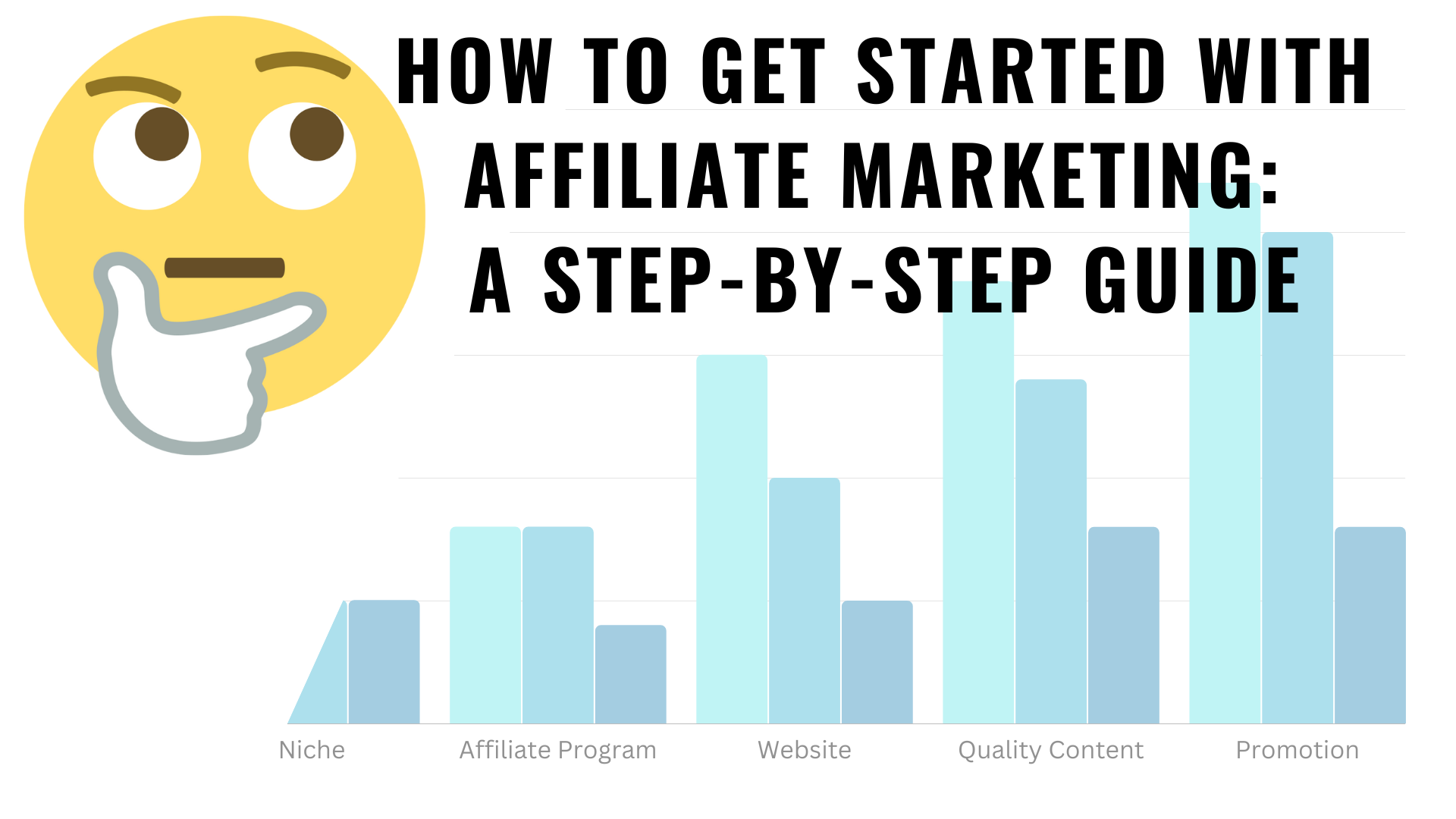Affiliate marketing is a popular and effective way to monetize your website or blog. By partnering with merchants and promoting their products or services, you can earn a commission on each sale or lead generated through your unique affiliate link. In this step-by-step guide, we’ll walk you through the process of getting started with affiliate marketing, from choosing your niche to promoting products and tracking your results.
Step 1: Choose Your Niche
The first step to getting started with affiliate marketing is to choose your niche. Your niche should be a topic or area of interest that you’re passionate about and that has a viable audience. Examples of popular niches include health and wellness, personal finance, travel, and technology.
To choose your niche, consider your interests and expertise, as well as the potential profitability and competition of the niche. Use keyword research tools and market research to identify the best opportunities for your niche.
Step 2: Choose Your Affiliate Programs
Once you’ve chosen your niche, the next step is to choose your affiliate programs. There are many affiliate programs to choose from, ranging from individual merchants to large affiliate networks. Some popular affiliate programs include Amazon Associates, ClickBank, and Commission Junction.
When choosing your affiliate programs, consider the quality and relevance of the products or services, the commission rates and payment terms, and the tools and support provided by the program. Choose programs that align with your niche and provide value to your audience.
Step 3: Create Your Website or Blog
The next step is to create your website or blog. Your website or blog will be the platform for promoting your affiliate links and generating traffic and sales. Choose a domain name and web hosting provider, and set up your website or blog using a content management system like WordPress.
When creating your website or blog, focus on providing high-quality content that is relevant and useful to your audience. This will help you build trust and authority, and attract more visitors to your site.
Step 4: Create High-Quality Content
The key to success in affiliate marketing is to create high-quality content that promotes the products or services you’re promoting. This can include blog posts, product reviews, tutorials, and other types of content that provide value to your audience.
When creating your content, focus on providing an honest and objective review of the product or service, highlighting its features and benefits, and providing a clear call to action. Use persuasive language and emotional appeals to encourage your audience to take action and make a purchase.
Step 5: Promote Your Affiliate Links
Once you’ve created your high-quality content, the next step is to promote your affiliate links. This can include placing banners or text links on your website or blog, promoting your links on social media, and using email marketing to promote your affiliate offers.
When promoting your affiliate links, focus on providing value to your audience and avoiding spammy or aggressive marketing tactics. Use tracking tools to monitor your results and optimize your campaigns for better performance.
Step 6: Track Your Results and Optimize Your Campaigns
The final step in getting started with affiliate marketing is to track your results and optimize your campaigns. Use tracking tools to monitor your clicks, conversions, and earnings, and use this data to identify areas for improvement and optimize your campaigns for better performance.
When optimizing your campaigns, focus on improving your conversion rate, increasing your traffic, and expanding your reach. Test different strategies and tactics, and make data-driven decisions to improve your results.



